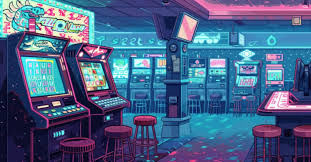
Setting up a gaming environment can feel overwhelming, especially for beginners. From hardware requirements to software configurations, every step plays a crucial role in enhancing your gaming experience. Whether you’re a PC gamer or a dzombz trainer this easy setup guide will help you get started quickly and effectively.
Choosing the Right Hardware
The first and most important step in setting up your gaming environment is choosing the right hardware. Depending on your budget, gaming preferences and the type of games you play, the specifications will vary.
Gaming PC or Console?
- PC: If you prefer versatility and high-performance gaming, a gaming PC is your best bet. Look for a multi-core processor, high-end graphics card, at least 16 GB of RAM, and SSD storage for faster load times.
- Console: On the other hand, gaming consoles like the PlayStation 5, Xbox Series X, or Nintendo Switch are plug-and-play options, offering exclusive titles and seamless gaming without the need for hardware upgrades.
Monitor or TV?
- Monitors: Gamers who focus on competitive gaming (e.g., FPS games) should consider a monitor with a high refresh rate (120 Hz or more) and low response time (below 5 ms).
- TV: For a more cinematic experience, especially with story-driven or RPG games, a 4K HDR TV would be a better fit.
Essential Peripherals
- Keyboard and Mouse: For PC gaming, invest in a good mechanical keyboard with customizable RGB lighting and a gaming mouse with adjustable DPI for precision.
- Controller: If you’re more comfortable with a controller, both PCs and consoles support external gaming controllers. Xbox controllers are popular for their compatibility across platforms.
Setting Up the Software
Once your hardware is in place, the next step is configuring the software for an optimized gaming experience.
Install the Right Drivers
For PC gamers, it’s essential to keep your graphics card drivers up to date. Whether you’re using an NVIDIA or AMD graphics card, you can find the latest drivers on their official websites. Updated drivers ensure that you’re getting the best possible performance and the latest bug fixes for newer games.
Game Store Accounts
- Steam: One of the most popular digital platforms for PC games. Sign up and download your games from Steam for a vast library of titles.
- Epic Games Store: Another alternative that often offers free games.
- PlayStation Store, Microsoft Store, or Nintendo eShop: Console gamers will rely on these platforms to download digital copies of games and receive updates.
Optimizing Your Game Settings
Every game offers graphical settings to enhance performance. For PC gamers, pay attention to:
- Resolution: Higher resolutions (e.g., 1440p or 4K) offer better visuals but require a more powerful GPU.
- Frame Rate (FPS): Aim for a 60 FPS standard for smooth gameplay.
- V-Sync and G-Sync: These settings prevent screen tearing and sync your frame rates with your monitor’s refresh rate.
- Shadows and Anti-Aliasing: Turning these off or lowering their quality can improve performance, especially on lower-end systems.
Console gamers have fewer customizable options but can still tweak settings like HDR, performance mode, or resolution mode to enhance their experience.
Setting Up Your Gaming Space
Beyond just the hardware and software, creating a comfortable and immersive gaming space is crucial for long gaming sessions.
Desk and Chair
- Desk: Invest in a sturdy, spacious desk that can hold your monitor(s) or TV, gaming PC, console, and other accessories. Height-adjustable desks are a plus, allowing you to switch between sitting and standing.
- Chair: A comfortable ergonomic gaming chair can make a huge difference. Look for a chair with adjustable armrests, lumbar support, and a headrest.
Cable Management
With multiple devices connected, your gaming setup can become cluttered. Invest in:
- Cable organizers: Velcro straps or cable sleeves can help keep things tidy.
- Power strips: Make sure you have a power strip with surge protection to handle all your devices.
Audio Setup
Great audio can make a huge difference in your gaming experience.
- Headsets: A good gaming headset with surround sound can immerse you in the game and help you hear critical in-game audio cues.
- Speakers: If you prefer external speakers, invest in a surround sound system or a soundbar for a rich audio experience.
Internet Connection
A stable and fast internet connection is key for online gaming, especially for competitive play.
Wired vs. Wireless
- Wired (Ethernet): Provides the most stable connection, which is crucial for reducing latency in online multiplayer games.
- Wireless (Wi-Fi): If a wired connection is not possible, ensure you’re using Wi-Fi 6 or a reliable gaming router for fast speeds and low latency.
Test Your Speed
Make sure your internet speeds meet the minimum requirements for your games, particularly for multiplayer titles:
- Minimum: 3 Mbps download, 1 Mbps upload
- Recommended: 15-20 Mbps download, 5 Mbps upload for smoother performance
Conclusion
Setting up a gaming space doesn’t have to be complicated. With the right hardware, software, and space considerations, you can create a gaming environment that is both functional and comfortable. Whether you’re a console gamer or a PC enthusiast, these steps will help you optimize your setup for the best gaming experience. Remember to keep your drivers updated, customize your in-game settings for the best performance, and enjoy your gaming journey











